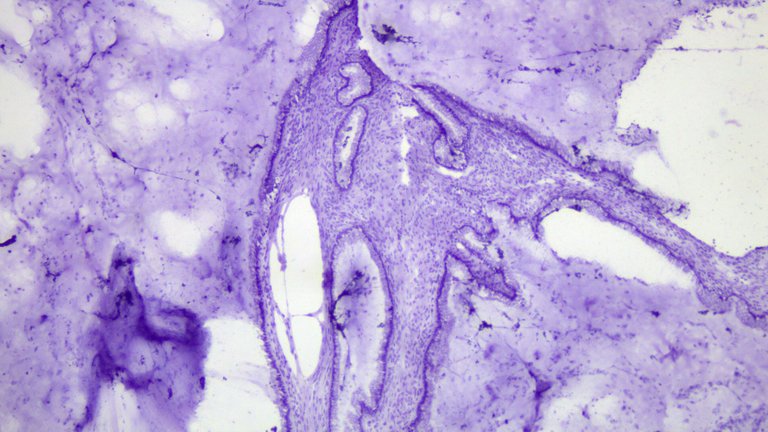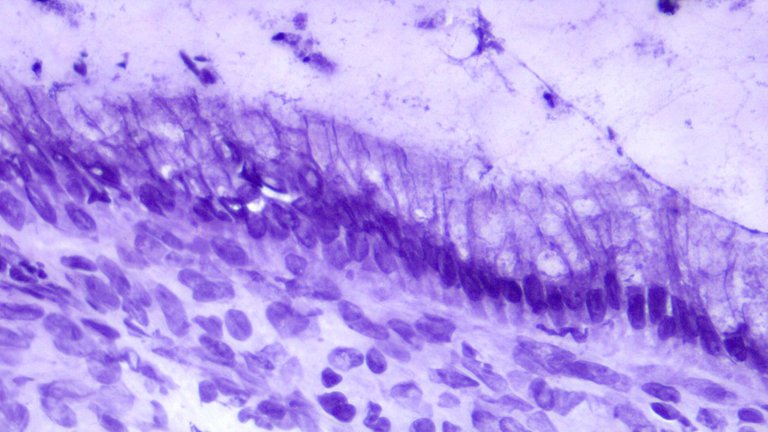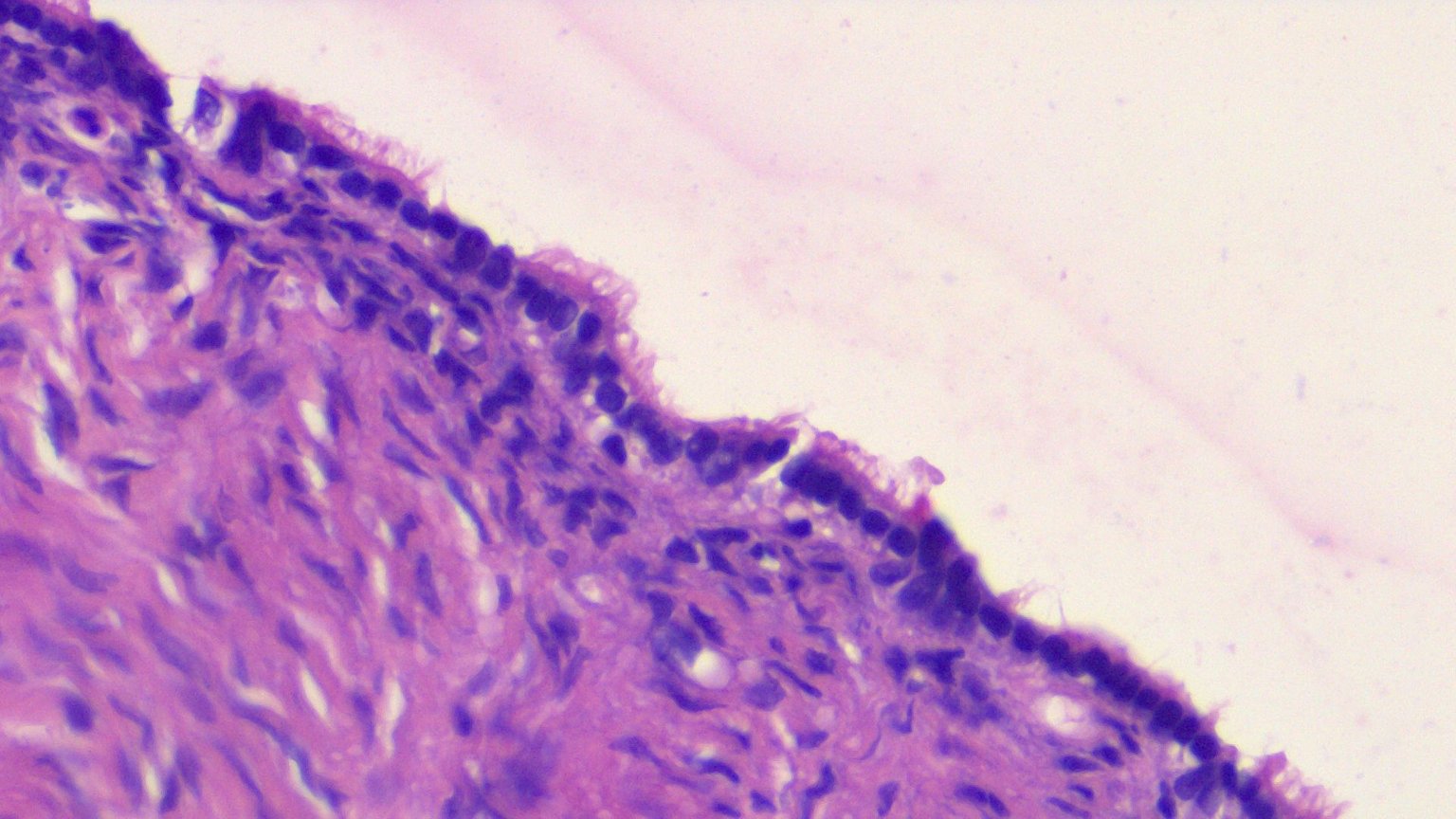Mucinous Cystadenoma of the Ovary
These shots are different compared to the usual slides I show because these sections were processed under frozen section. This means the tissues received arrived fresh and was flash frozen then stained for rapid assessment.
Frozen section biopsies are usually done when trying to determine the extent of excision biopsies, get a quick probable diagnosis compared to waiting for days when the specimens get processed under routine conditions, and gives more information about the patient’s condition in real time.
The above definition there isn’t a conceptual definition, that’s just how I understood the purpose when someone brings up the reasons why frozen sections are done. I’m sure there’s a classy way to frame the process like reading a textbook.
The common pitfall for frozen sections is the time element, prone to having preanalytical discrepancies such as time between transport and processing, and examination of tissues under none ideal conditions (because preserved tissues fixed in formalin offers a better view than frozen section). This requires a lot of skill as benign features can be mistaken for malignancy and some other artifacts associated with freezing the specimen. It’s also quite pricey to opt for given how intensive rapid on-site evaluation goes. I don’t know how rates go from the 1st world but I can tell you these procedures don’t come cheap and only few institutions have the machine and expert personnel to carry it out.
Taken at 40x magnification.

The section shows the cyst containing multiple loculations with a simple columnar epithelial lining.
Taken at 100x magnification.

At closer inspection, it’s already recognizable that these columnar cells contain a lot of mucin within their cytoplasm.
Taken at 400x magnification.

Taken at 400x magnification of a Serous Cystadenofibroma

This is a benign case but grossly, it’s hard to tell given this can grow up to 30cm large in diameter (think of watermelons) due to how much mucin is packed within the cysts. Usually, we can tell if the tumor is serous or mucinous based on the type of fluid content. A mucinous tumor would have a gelatinous like consistency in contrast to a serous tumor where it’s light brown to brown fluid. An extensive sampling is done where size of the widest tumor diameter in centimeters x 2 sections to make sure no focus of tumor gets unnoticed. It’s not a guarantee that it won’t get missed but it’s one of the guidelines used to adequately sample the specimen.
From experience, most of the time, we receive these types of specimens when they are large and unbearable to carry because people with financial constraints don’t seek medical care early when the signs do occur. It’s good if it turns out benign but if there are parts within the tumor that shows signs of malignancy, the added cost of chemotherapy just makes things worst. Sometimes if it does turn out malignant, patients would just be contented having it taken out and will try to seek alternative medical treatments (some herbal remedies most likely) because they can’t afford the staple known chemotherapy/radiotherapy.
I thought about mentioning the prognosis, treatment and how this tumor is but that’s stretching the post. These are common cases and easy to look up.
If you made it this far reading, thank you for your time.
Posted with STEMGeeks
Thanks for your contribution to the STEMsocial community. Feel free to join us on discord to get to know the rest of us!
Please consider delegating to the @stemsocial account (85% of the curation rewards are returned).
You may also include @stemsocial as a beneficiary of the rewards of this post to get a stronger support.
I've seen PathAs do this on daily basis and even they don't know how much stuff costs. I don't even know how much the tests I conduct in micro cost either.
Most of it is up to client services and insurance around here.
!discovery 31
We don't get to do frozen section often due to our machine gets broken and the nearest technicians to fix takes around months to come by then additional months to order parts overseas. Quite an inconvenience for training and health care in general but these are expensive to opt for here.
The hospitals that have a working frozen sections have high fees and even these fees are already cheap from recommended rates from our association but you know, we need to adjust because in the end, it's the patients who have no health insurance that are going to pay and I'm understating how pro rates here are being lowballed often.
I get to chat with the secretary/receptionist/encoder for the billing at our department regarding rates as this often gets asked. Now that we got to see the bucket lists of IHC stains and processing/professionals fees upfront, we kinda start getting more conscious about what tests we recommend to clinicians at the bare minimum.
Dang, and I thought my department had work order issues.
Your content has been voted as a part of Encouragement program. Keep up the good work!
Use Ecency daily to boost your growth on platform!
Support Ecency
Vote for new Proposal
Delegate HP and earn more
As the usual nice description of the slides. I recommended your posts to a student that is entering med school and wants to be a pathologist! I think she will learn a lot from them!
That is a sad reality in lots of countries. I am not sure where are you are from but It happens a lot in many countries. The Tx usually are very expensive, and if we mention monoclonal antibodies is crazy! At least in my home country Brazil they import all the Mabs so you have the USD conversion plus import taxes in addition to a Tx that is crazy expensive already (not mentioning the social problems within the country). A country's government needs to help its population to access this type of Tx, all the burden can't go to the Pt only.
!1UP
Click this banner to join "The Cartel" discord server to know more.
You have received a 1UP from @gwajnberg!
@stem-curator
And they will bring !PIZZA 🍕.
Learn more about our delegation service to earn daily rewards. Join the Cartel on Discord.